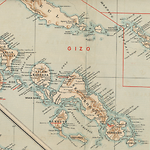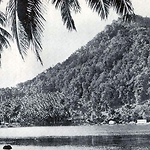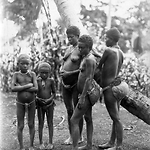Place: New Georgia Islands
Details
The New Georgia Islands are a group consisting of Vella Lavella (q.v.), Ranongga, Simbo, Gizo (q.v.), Kolombangara, Arundel, Parara, New Georgia, Rendova, Tetepare, Vangunu and Gatokae. There are also hundreds of smaller islands, many of them within Marovo Lagoon (q.v.), the largest salt-water lagoon in the world, which stretches along the north side of New Georgia, Vangunu and Gatokae Islands. Smaller Roviana Lagoon (q.v.) is on the north side of New Georgia. The islands are on one side of New Georgia Sound (The Slot [q.v.]) south of Choiseul Island and its contiguous Rob Roy and Vaghena Islands, and opposite Isabel Island. To the south are the Russell Islands. The larger islands are mountainous with heavy rainforest cover. There is also an under-sea volcano and there are other areas of seismic activity (q.v.).
The central part of New Georgia Island is home to the core Roviana culture. A complex of megalithic shrines were developed at Bao in the thirteenth century and sometime later (the fifteenth to seventeenth centuries) these peoples moved to the coast and onto the small barrier islands of Roviana Lagoon, with Nusa Roviana as the cultural hub. European whalers and traders began to operate in the area in the early nineteenth century and European settlers began to arrive in the 1880s. (Bennett 1987, 350-355) New Georgia was central to trade in this part of the Solomons and in the second half of the nineteenth century headhunting (q.v.) raids on surrounding islands became a predominant feature of society. There are ancient taro terraces in the southeast and northern areas of New Georgia and on Kolombangara, which are known locally as ruta. In the past these were irrigated, and their extent indicates high inland population levels. (Sheppard, Walter, and Nagaoka 2000; Tedder with Barrus 1976; Aswani 2008, 181)
The New Georgia Islands were close to the early centres for whaling (q.v.) in the first half of the nineteenth century and trading in the second half. This generated trade goods for consumption and also seems to have fuelled an increase in headhunting, which led to decades of raiding expeditions from the New Georgia area against Choiseul, Isabel and as far south as the Russell Islands, Nggela and Guadalcanal. The New Georgia raiders were feared throughout the northern Solomons. Between 1886 and 1899, the New Georgia Islands were claimed as part of German New Guinea (q.v.) and subject to land claims by the Deutsche Handels- und Plantagen-Gesellschaft (DHPG), which were eventually purchased by Pacific Islands Co. Ltd. (q.v.).
The main towns are Gizo (q.v.), established as a government base in 1899, and Munda and Noro, the latter now the base for tuna fishing and processing. Once Gizo was established, the early Protectorate Government was able to carry out paramilitary operations to suppress headhunting, and the Methodist Mission's 1902 arrival in Roviana Lagoon also transformed the area. At the same time copra plantations began to be developed and the area became the centre of the Protectorate's plantation economy. This attracted capital and indentured labour from other parts of the Solomons, particularly Malaita, Guadalcanal and the Eastern District.
There were many copra plantations in the group: Mundimundi, Juno, Turovilu Point and Turovilu Island, Malasova, Liapari, Joroveto and Ruruvai on or close to Vella Lavella Island; Emu Harbour and Aena on Ranongga Island; Bagga on Mbava (Baga) Island; Popomuana, Logha and Panapagha on or near Gizo Island; Lady Lever, Vila, Stanmore and Kerekana on Kolombangara Island; Kenelo, Rendova Harbour and Lukuru on Rendova Island; Arundel and Kinda on Kohinggo Island; Lambeti, Mbanga, Pauru, Salakalala and Seghe on New Georgia; Hamarae just off New Georgia's northeast coast; and Kachikachi, Karanohu, Timberina, Tingi, Bukibuki, Malavare, Tetama, Avaasa, Uepi, Mahoro, Lilihina, Mbareho, Ngarengare, Karungarao, Tinge, Lalauru, Balavaini, Vangunu and Lilihena on or around Marovo Lagoon and Vangunu Island. (Bennett 1987, 62, 89; Golden 1993, 193-197) A few labourers from the New Georgia Islands worked in Queensland: during the 1870s and 1880s fifteen went from Ranongga and eighty-five from Vella Lavella. (Price with Baker 1976) A few worked in Fiji during those years: three from New Georgia; five from Ranongga and two from Vella Lavella. (Siegel 1985) Once the local plantations began to operate there was no need to work away from home.
During the Second World War (q.v.), in 1942, the Japanese occupied the New Georgia area, which was retaken by American forces in June to August 1943. The Japanese airfield at Munda was particularly large and difficult to secure. Several large naval battles took place around the area, as well.
The New Georgia people speak a combination of Austronesia and non-Austronesian (Papuan) languages, which link Vella Lavella, Rendova, Savo and the Santa Cruz Islands to migrations from the East Papua phylum. Ten languages are spoken, classified as part of the Northwest Solomonic languages. (Bennett 1987, 7; http://language.psy.auckland.ac.nz/austronesian/research.php [accessed 26 June 2011])
Related entries
Published resources
Books
- Bennett, Judith A., Wealth of the Solomons: A History of a Pacific Archipelago, 1800-1978, University of Hawai'i Press, Honolulu, 1987. Details
- Golden, Graeme A., The Early European Settlers of the Solomon Islands, Graeme A. Golden, Melbourne, 1993. Details
Book Sections
- Aswani, Shankar, 'Forms of Leadership and Violence in Malaita and in the New Georgia Group, Solomon Islands', in Pamela J. Stewart;Andrew Strathern (ed.), Forms of Leadership and Violence in Malaita and in the New Georgia Group, Solomon Islands, Carolina Academic Press, Durham, North Carolina, 2008, pp. 171-194. Details
Journal Articles
- Siegel, Jeff, 'Origins of Pacific Island Labourers in Fiji', Journal of Pacific History, vol. 20, no. 2, 1985, pp. 42-54. Details
Images
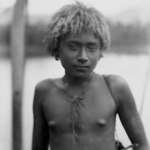
- Title
- A boy of Vella Lavella, New Georgia Group
- Type
- Image
- Date
- 1906
- Source
- Anglican Church of Melanesia
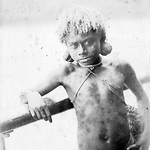
- Title
- A Boy-Showing Ear Ornaments (3/4 Fig.), New Georgia Group
- Type
- Image
- Date
- 1906
- Source
- Anglican Church of Melanesia
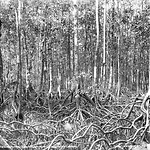
- Title
- A mangrove Swamp, Pachu River, Choiseul Island
- Type
- Image
- Date
- 1906
- Source
- Anglican Church of Melanesia
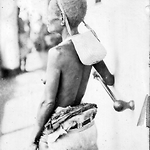
- Title
- A Woman (3/4 Fig.) of Vella Lavella Island (New Georgia Group)
- Type
- Image
- Date
- 1906
- Source
- Anglican Church of Melanesia
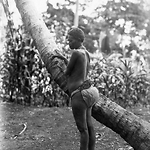
- Title
- A Woman of Vella Lavella, New Georgia Group
- Type
- Image
- Date
- 1906
- Source
- Anglican Church of Melanesia
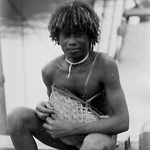
- Title
- A Young man (3/4 Sitting) of Vella Lavella Island (New Georgia Group)
- Type
- Image
- Date
- 1906
- Source
- Anglican Church of Melanesia
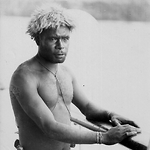
- Title
- A Young Man (3/4 Standing), Vella Lavella Island (New Georgia Group)
- Type
- Image
- Date
- 1906
- Source
- Anglican Church of Melanesia
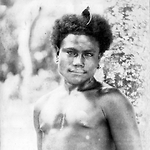
- Title
- A Young Man Wearing Sunshade-Vigt., Vella Lavella Island (New Georgia Group)
- Type
- Image
- Date
- 1906
- Source
- Anglican Church of Melanesia
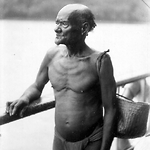
- Title
- An Old Man (3/4 Fig.), Vella Lavella Island (New Georgia Group)
- Type
- Image
- Date
- 1906
- Source
- Anglican Church of Melanesia
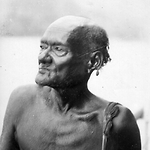
- Title
- An Old Man, Vella Lavella Island (New Georgia Group)
- Type
- Image
- Date
- 1906
- Source
- Anglican Church of Melanesia
.png)
- Title
- Banyan tree at Maravari River, New Georgia Group
- Type
- Image
- Date
- 1906
- Source
- Anglican Church of Melanesia
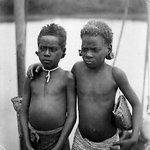
- Title
- Beattie called this "Two Little Head-hunters", Vella Lavella Island (New Georgia Group
- Type
- Image
- Date
- 1906
- Source
- Anglican Church of Melanesia
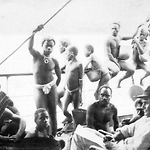
- Title
- Bishop Wilson talking to Vella Lavella People on board the Southern Cross, Vella Lavella Island (New Georgia Group)
- Type
- Image
- Date
- 1906
- Source
- Anglican Church of Melanesia
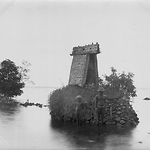
- Title
- Islet Shrine at Tunduo, New Georgia Group
- Type
- Image
- Date
- 1906
- Source
- Anglican Church of Melanesia
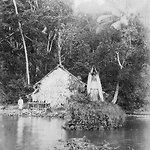
- Title
- Islet Shrine, Tendao, Java, Vella Lavella Island (New Georgia Group)
- Type
- Image
- Date
- 1906
- Source
- Anglican Church of Melanesia
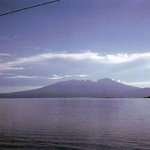
- Title
- Kolombangara Island is in the New Georgia Group, almost perfectly round in shape and about 15 km across. It is a stratovolcano that reaches an altitude of 1,770 metres.
- Type
- Image
- Date
- 1970
- Source
- Brian Taylor
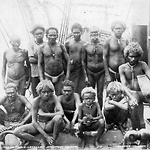
- Title
- Men of Vella Lavella Island (New Georgia Group)
- Type
- Image
- Date
- 1906
- Source
- Anglican Church of Melanesia
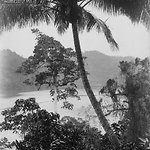
- Title
- Paraso Bay, Vella Lavella Island (New Georgia Group)
- Type
- Image
- Date
- 1906
- Source
- Anglican Church of Melanesia
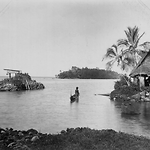
- Title
- Shrine and Gamal at Tendao, Vella Lavella Island (New Georgia Group)
- Type
- Image
- Date
- 1906
- Source
- Anglican Church of Melanesia
.png)
- Title
- The Entrance, Paraso Bay, Vella Lavella Island (New Georgia Group)
- Type
- Image
- Date
- 1906
- Source
- Anglican Church of Melanesia
.png)
- Title
- The Entrance, Paraso Bay, Vella Lavella Island (New Georgia Group)
- Type
- Image
- Date
- 1906
- Source
- Anglican Church of Melanesia
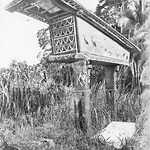
- Title
- The Shrine, Tendao, Java, Vella Lavella Island (New Georgia Group)
- Type
- Image
- Date
- 1906
- Source
- Anglican Church of Melanesia
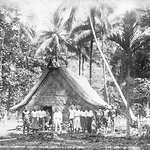
- Title
- Village School at Maravari River, New Georgia Group
- Type
- Image
- Date
- 1906
- Source
- Anglican Church of Melanesia
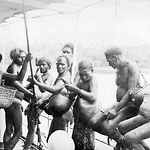
- Title
- Visitors onboard the Southern Cross, Vella Lavella Island (New Georgia Group
- Type
- Image
- Date
- 1906
- Source
- Anglican Church of Melanesia
